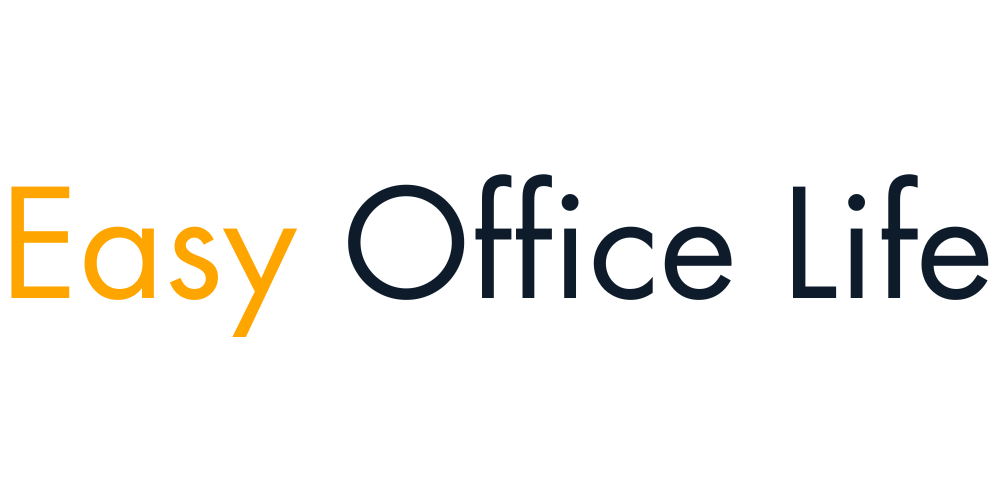
Introduction to Remote Work Productivity
In recent years, the shift to remote work has transformed the professional landscape for many individuals and organizations. While remote work offers flexibility and the potential for enhanced work-life balance, it also presents unique challenges that can hinder productivity. Understanding these challenges is crucial for implementing essential productivity techniques for remote work that can help individuals thrive in a home office setting.
One of the most significant challenges faced by remote workers is distractions. The home environment can be filled with various interruptions, from household chores to family members. Unlike traditional office settings, where professional boundaries are clearer, remote work often blurs the lines between personal and professional responsibilities. This can lead to decreased concentration and a reduction in overall work quality. Adapting productivity techniques that help manage these distractions becomes essential for maintaining focus.
Another issue is the lack of structure that can accompany remote work. In a conventional workplace, employees are guided by set routines and schedules. Conversely, working from home can create a more fluid work day, making it easy for one to lose track of time or become less disciplined in their approach to tasks. Establishing a structured routine is vital to replicating the level of productivity that often comes naturally in an office environment. Implementing specific productivity techniques can provide remote workers with the framework they need to achieve their goals effectively.
Lastly, the isolation that many remote workers experience can be a considerable obstacle to productivity. Social interactions with colleagues are limited when working from home, leading to feelings of loneliness and disengagement. These feelings can negatively impact motivation and performance. By recognizing the importance of connecting with others and integrating collaborative tools into their daily routine, remote workers can mitigate feelings of isolation and enhance their overall productivity.
Establishing a Dedicated Workspace
Creating a dedicated workspace is fundamental to ensuring productivity while working remotely. An efficient workspace not only minimizes distractions but also enhances focus and motivation, contributing significantly to overall work performance. To establish such an environment, consider the following essential productivity techniques for remote work.
First and foremost, the physical attributes of your workspace can impact your ability to concentrate. Invest in an ergonomic chair and desk that support healthy posture and reduce the likelihood of discomfort during long working hours. Ideally, your workspace should be well-lit, ideally with natural light, as this has been shown to increase alertness and energy levels. Furthermore, a clean and organized area can help to keep your mind clear and focused on the tasks at hand.
Additionally, minimizing distractions is crucial in maintaining productivity. Identify any potential disturbances in your environment, such as noise or interruptions from other household members, and implement methods to mitigate them. For instance, using noise-canceling headphones or establishing ground rules with those you share your space with can help create boundaries necessary for concentration.
Moreover, personalizing your workspace can significantly boost motivation. Incorporate elements that inspire you, such as artwork, plants, or carefully selected decor that resonates with your style. Having reminders of your goals or achievements in your view can further enhance your focus and determination while working. This combination of a well-designed, ergonomic environment and personal touches makes for a highly functional workspace.
In conclusion, establishing a dedicated workspace is a vital step toward maximizing productivity in remote work. By investing in ergonomic furnishings, reducing distractions, and personalizing the environment, you can create an atmosphere that fosters focus and motivation, leading to enhanced work outcomes.
Creating a Structured Daily Routine
Establishing a structured daily routine is paramount to maximizing productivity while working remotely. The flexibility that comes with remote work can often blur the lines between professional and personal time, leading to distractions and decreased efficiency. By implementing a well-defined schedule, individuals can foster a productive work environment that helps maintain focus and motivation throughout the day.
A crucial aspect of developing a structured routine is setting specific work hours. By designating a clear start and end time to the workday, employees can create a sense of normalcy similar to that of working in a traditional office. Consistency in hours not only aids in establishing a productive rhythm but also reinforces the importance of boundaries between work and personal life. It is advisable that individuals communicate these hours to colleagues and family members, ensuring that everyone respects this time commitment.
Incorporating designated breaks into the structure of the day further enhances productivity. Scheduled breaks allow for mental rejuvenation, helping to prevent burnout and maintain a high level of focus. Techniques such as the Pomodoro Technique, where work is divided into intervals followed by short breaks, can be particularly effective. During these breaks, engaging in activities unrelated to work, such as a quick walk or stretching, can significantly improve concentration upon returning to tasks.
Ultimately, a well-structured daily routine is essential for individuals working remotely. Establishing set work hours, planned breaks, and adhering to a consistent schedule contributes to better time management and enhances overall productivity. By creating these parameters, remote workers can more effectively navigate the challenges of their environment while achieving a healthy work-life balance.
Using Time Management Techniques
In the context of remote work, effective time management is critical for maintaining momentum and achieving daily goals. Several time management techniques can serve as essential productivity techniques for remote work, enabling individuals to maximize their efficiency. Among these, the Pomodoro Technique, time blocking, and the Eisenhower Matrix stand out as particularly beneficial.
The Pomodoro Technique is a simple yet effective method that encourages focused work sessions interspersed with short breaks. Typically, it involves working for 25 minutes, followed by a 5-minute break, known as a “Pomodoro.” This approach helps maintain concentration while minimizing burnout. For example, remote workers can apply this technique by setting a timer and committing to complete a specific task within the 25-minute window, ensuring that they remain productive while also allowing time for rest.
Time blocking is another strategy that enhances productivity by allocating predetermined time slots for various tasks throughout the day. This method requires individuals to create a daily schedule that includes dedicated blocks for specific activities, such as meetings, project work, and breaks. By adhering to this schedule, remote workers can minimize distractions and improve their focus. For instance, one could block out the first hour of the day solely for responding to emails, followed by two hours of uninterrupted work on a major project.
Lastly, the Eisenhower Matrix helps prioritize tasks by categorizing them into four quadrants based on urgency and importance. This technique enables remote workers to distinguish between tasks that require immediate attention and those that can be scheduled for later. By identifying what is truly important, individuals can allocate their time and energy more efficiently, leading to improved outcomes in their remote work environment.
Implementing these time management techniques can substantially enhance productivity for those working remotely. By focusing on effective strategies like the Pomodoro Technique, time blocking, and the Eisenhower Matrix, individuals can combat distractions and stay on track with their objectives.
Leveraging Technology for Better Collaboration
In today’s rapidly evolving work environment, leveraging technology has become paramount for enhancing collaboration among remote teams. Various tools and software solutions are designed to support productivity and communication, enabling teams to work seamlessly, regardless of their geographical locations. One of the most widely used platforms is Slack, which offers robust features such as channels for organized discussions, direct messaging, and file sharing, thereby facilitating instant communication and teamwork.
Another important tool for remote collaboration is Trello. This project management platform utilizes boards and cards to track tasks, assign responsibilities, and set deadlines. Its visual approach helps team members gain a clearer understanding of project progress and responsibilities, streamlining workflows. For more complex project management needs, software like Asana excels in task tracking and team collaboration, offering features such as timeline views and workload management, which greatly contribute to essential productivity techniques for remote work.
Furthermore, video conferencing tools such as Zoom and Microsoft Teams provide virtual meeting spaces where teams can conduct face-to-face discussions, share screens, and present ideas effectively. These platforms play a critical role in bridging the gap created by physical distance and fostering a sense of community among remote workers. Additionally, Google Workspace and Microsoft 365 offer comprehensive solutions for file sharing and real-time collaboration on documents, spreadsheets, and presentations, enhancing collective productivity.
Incorporating these technologies into daily workflows not only boosts team collaboration but also promotes accountability and transparency. Each member becomes more engaged in their tasks, understanding the roles and contributions of their colleagues. Therefore, adopting the right tools is a significant step toward mastering essential productivity techniques for remote work, ultimately leading to improved outcomes and higher efficiency for remote teams.
Setting Clear Goals and Priorities
One of the most effective essential productivity techniques for remote work involves the establishment of clear goals and priorities. Implementing the SMART framework can significantly enhance this process, guiding individuals to set goals that are Specific, Measurable, Achievable, Relevant, and Time-bound. By crafting goals that align with these parameters, individuals can increase their focus and drive, which is particularly important in a remote work environment where distractions are abundant.
Specific goals fundamentally outline what needs to be achieved. For instance, instead of aiming to ‘improve project outcomes,’ one might set a goal to ‘increase the project’s completion rate by 20% in the next quarter.’ This clarity not only motivates but also provides a benchmark for measuring progress. Similarly, measurable goals allow individuals to track advancements, making it easier to stay on course and adjust strategies as necessary. Achievable goals ensure that expectations are realistic, while relevant goals keep tasks aligned with overarching objectives, ensuring that efforts are not misdirected.
Time-bound goals introduce accountability, fostering a sense of urgency that can mitigate procrastination. In addition to setting these SMART goals, it is imperative for remote workers to prioritize their daily and weekly tasks. One effective method to achieve this is by employing the Eisenhower Matrix, which distinguishes between urgent and important tasks. By categorizing tasks accordingly, individuals can allocate their time more efficiently, focusing first on what truly matters. Alternatively, creating a daily to-do list that aligns with weekly objectives can help maintain focus and ensure that critical tasks are completed ahead of deadlines, thus enhancing overall productivity while working remotely.
Maintaining Communication and Connection
Effective communication is paramount in maintaining productivity while working remotely. As employees distance themselves from traditional office environments, fostering an atmosphere of connection with colleagues and managers becomes essential for successful collaboration and teamwork. Regular communication not only ensures that tasks are on track but also nurtures a sense of belonging and engagement among remote workers.
One of the fundamental productivity techniques for remote work involves utilizing various communication tools that facilitate seamless interaction. Platforms such as Slack, Microsoft Teams, and Zoom have gained popularity for their ability to connect teams efficiently. These tools not only provide instant messaging capabilities but also support video conferencing, which emulates face-to-face interactions, making it easier for team members to share ideas and updates.
Establishing communication norms and best practices is vital for remote teams. Set regular check-ins, whether daily or weekly, to discuss ongoing projects, key challenges, and support needed from colleagues. These meetings can also serve as opportunities for team bonding, allowing members to share personal updates, thus strengthening interpersonal relationships. Additionally, using project management tools like Trello or Asana can keep everyone informed about project timelines and individual responsibilities, further enhancing clarity and communication.
It is also crucial to encourage an open dialogue within the team. Cultivating a culture where team members feel comfortable discussing challenges and sharing ideas can significantly enhance engagement and productivity. This openness fosters collaboration, allowing for innovative solutions and improvements in workflow. In essence, maintaining robust communication and connection among remote workers is a cornerstone of essential productivity techniques for remote work, ensuring that teams remain engaged and aligned towards common goals.
Incorporating Regular Breaks and Downtime
One of the most essential productivity techniques for remote work is the integration of regular breaks into the daily schedule. Working remotely can blur the lines between professional and personal life, often leading to extended periods of focused effort without adequate rest. However, taking scheduled breaks can significantly enhance overall productivity and prevent burnout, which is increasingly prevalent in remote work environments.
To effectively schedule breaks, it is beneficial to apply the Pomodoro Technique, which involves working for 25 minutes followed by a 5-minute break. After four cycles, a longer break of 15 to 30 minutes can be taken. This structure not only maintains focus during work sessions but also creates anticipation for the upcoming break, helping to reduce fatigue. Additionally, it is vital to utilize these breaks wisely by engaging in activities that promote mental and physical relaxation. This could include stretching, taking a walk, or practicing mindfulness exercises, all of which can rejuvenate the mind and body.
The long-term benefits of incorporating downtime into a work schedule are profound. Regular breaks can help improve concentration, foster creativity, and enhance problem-solving skills. Furthermore, they play a critical role in maintaining mental health by providing opportunities for reflection and recuperation. In remote work settings, where isolation can contribute to stress, these breaks become even more essential, offering a necessary respite from screen time and work-related stressors. By embedding regular breaks into daily routines, professionals can optimize their productivity while ensuring their well-being remains a priority. Embracing these essential productivity techniques for remote work will lead to a more balanced and sustainable work-life dynamic.
Continuing Professional Development Remotely
In an era where remote work has become increasingly prevalent, the necessity for ongoing learning and professional development cannot be overstated. Engaging in essential productivity techniques for remote work often includes prioritizing skill enhancement and knowledge acquisition. Remote workers must embrace opportunities for growth to stay competitive in their fields and maintain relevance in an ever-evolving job market.
One of the most effective strategies for professional development is participating in online courses. Numerous platforms offer a wide range of subjects, from technical skills like coding or graphic design to soft skills such as communication and leadership. Websites like Coursera, LinkedIn Learning, and Udemy provide valuable resources where professionals can learn at their own pace. These courses generate not only knowledge but also credentials that may prove beneficial for career advancement.
Webinars and virtual workshops also serve as excellent venues for expanding one’s expertise. They provide real-time engagement with industry experts and allow for interactive discussions on contemporary topics. For remote workers, attending these sessions can facilitate networking opportunities and foster connections with like-minded professionals. These interactions are essential for building relationships that may lead to future collaborations or job opportunities.
In addition, joining professional organizations and online communities can significantly enhance professional visibility and offer support. Many of these platforms host forums or discussion groups where members can exchange ideas and resources. This camaraderie among peers can provide encouragement and motivation, as well as access to job postings or mentorship opportunities.
In conclusion, continual professional development remains a crucial aspect of thriving in remote work environments. By leveraging online courses, webinars, and networking platforms, individuals can effectively implement essential productivity techniques for remote work, ultimately contributing to both personal fulfillment and career success.




